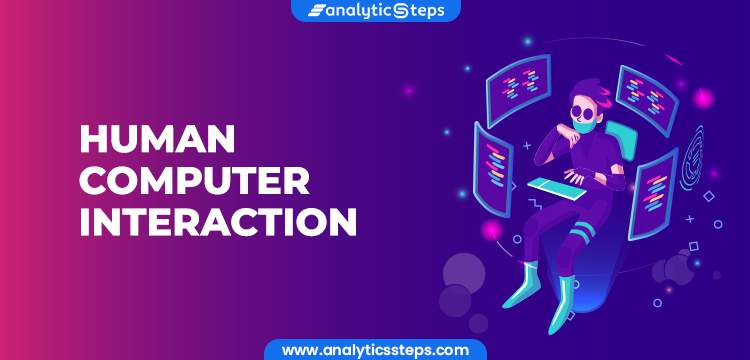Introduction
As artificial intelligence and machine learning integrate into nearly every layer of digital experience, human–computer interaction (HCI) is undergoing a quiet but profound transformation. Once a field primarily concerned with usability and efficiency, HCI is now being reshaped by concepts such as empathy, affect, and ethics. Interfaces no longer merely display information—they feel, respond, and adapt to human emotion.
This evolution poses both promise and peril. Intelligent interfaces that can interpret our emotional states might enhance accessibility, mental health, and creativity. Yet they also challenge the boundaries of privacy, autonomy, and authenticity. This essay explores the moral and emotional dimensions of HCI in the AI era—where technology not only understands us but begins to simulate care.
1. From Functionality to Feeling
The earliest design principles in HCI emphasized efficiency—minimizing user effort, reducing error, and optimizing task completion. Success was measured in seconds saved or clicks avoided. However, as digital systems became embedded in everyday life, a new question arose: How does technology make us feel?
Emotional design, introduced by Donald Norman in his seminal work Emotional Design: Why We Love (or Hate) Everyday Things, reframed the discipline. A product’s aesthetic pleasure, emotional resonance, and symbolic meaning could determine its success more than its raw performance. The rise of social media, personalized recommendations, and gamified experiences reinforced this truth: interaction is as much about psychology as about function.
Today, intelligent systems analyze facial expressions, vocal tones, and physiological signals to infer affective states. Human–computer interaction is no longer one-way; it is affective feedback, a dance of recognition and response.
2. Affective Computing: Machines That Feel
The concept of affective computing, coined by Rosalind Picard in the 1990s, introduced the radical idea that machines could recognize and respond to human emotions. By interpreting signals such as micro-expressions, heart rate, or typing rhythm, systems could gauge frustration, boredom, or joy.
Early applications appeared in education and healthcare—tutoring systems that detected student confusion, or assistive technologies that helped autistic users interpret social cues. But as sensors and AI advanced, affective computing entered mainstream design. Smartphones now track emotional well-being; customer service bots detect anger; cars monitor driver stress.
Yet as machines become more affective, an ethical paradox emerges. Do we want systems that read our emotions? Emotional transparency may improve usability—but it can also expose our vulnerabilities. When corporations own data about how we feel, manipulation becomes more subtle and more powerful.
3. Empathy or Simulation? The Illusion of Caring Machines
One of the most debated questions in HCI ethics is whether machines can truly possess empathy. Empathy, in human terms, involves shared experience and moral concern. When an AI system says, “I’m sorry you’re upset,” it does not feel sorrow—it performs an approximation of compassion.
This simulation can still be effective; users often respond emotionally even when they know the empathy is artificial. Chatbots offering companionship, for instance, have been shown to reduce loneliness among the elderly. However, such relationships raise psychological and moral dilemmas.
When interaction becomes emotionally charged, users may attribute intentionality to systems that lack it. This anthropomorphism blurs accountability. If a caregiving robot fails to notice distress, who bears responsibility—the designer, the algorithm, or the machine itself?
Thus, empathy in HCI should be understood not as emotion in the machine, but as emotion through design. It is about creating interfaces that facilitate human dignity, respect, and emotional safety—not machines that mimic feeling.
4. The Ethics of Emotional Data
Emotion-sensing technologies rely on unprecedented volumes of personal data—facial features, voice intonations, gestures, even neural signals. These intimate markers constitute what some scholars call biometric emotions. Unlike traditional data, they reveal not what we say but who we are at our most unguarded.
The ethical implications are staggering. Emotional data can be used for marketing, surveillance, or political manipulation. In the hands of corporations or governments, affective computing risks becoming an instrument of control. Imagine a world where advertisements adapt to your facial micro-reactions, or employers monitor workers’ emotional states to assess “team spirit.”
To design empathetic interfaces ethically, HCI practitioners must adopt a principle of emotional privacy. Consent must extend beyond data collection to interpretation—users should have the right to control how their emotions are inferred, stored, and acted upon. Transparency, explainability, and data minimalism should be core design values.
5. Designing for Emotional Well-being
Despite these challenges, the empathetic turn in HCI holds immense potential for social good. Intelligent interfaces can promote emotional awareness, assist mental health, and foster self-regulation.
For example, digital journaling apps now employ sentiment analysis to help users track mood patterns over time. AI therapists like Woebot use cognitive-behavioral principles to guide users through stress.
In education, emotion-adaptive systems can adjust content difficulty or pace based on engagement levels. In healthcare, affective robots comfort patients and provide companionship to those with dementia.
However, for these technologies to truly enhance well-being, design must prioritize authentic connection over algorithmic efficiency. Instead of optimizing for engagement metrics, systems should nurture reflection, empathy, and agency.
A truly ethical HCI for well-being would measure success not by how long users stay, but by how meaningfully they grow.
6. The Designer’s Dilemma: Empathy vs. Manipulation
Empathy is a double-edged sword in design. The same techniques used to create compassionate interfaces can also manipulate behavior.
Consider persuasive design in social media—notifications, infinite scrolls, and “like” counters exploit psychological biases to sustain attention. These designs simulate care (“Your friend liked your post!”) while serving corporate profit.
The HCI community has begun to address this through the movement for ethical design or humane technology. The central tenet is simple: empathy should empower users, not exploit them. Designers must continually ask, “Who benefits from this emotional response?”
The emerging discipline of critical HCI challenges practitioners to expose power structures embedded in design. Empathy must never become a weaponized tool of influence. Instead, it should guide the creation of technologies that respect autonomy, transparency, and trust.

7. Cultural Dimensions of Empathy
Empathy is culturally specific. Expressions of emotion, communication norms, and moral values vary across societies. An empathetic interface designed for Western users may fail in East Asian contexts, where emotional restraint or indirectness is valued.
Cultural HCI emphasizes localization not just of language, but of emotional logic. For instance, a mental health chatbot must understand culturally specific idioms of distress; an educational system must adapt to different motivational frameworks.
Empathy in design thus demands cultural humility—recognizing that emotional intelligence cannot be universalized.
As global systems increasingly mediate emotion across borders, designing for cultural diversity becomes an ethical necessity.
8. Towards Moral Machines: Embedding Ethics in Interaction
If intelligent systems can influence emotion, they must also possess a moral architecture. This idea—sometimes referred to as machine ethics—explores how moral reasoning might be encoded into AI behavior.
In HCI, this translates to designing interfaces that embody ethical values: fairness, honesty, and respect for autonomy.
For example, explainable AI interfaces allow users to understand why a system made a recommendation, preventing blind trust. Privacy dashboards grant control over emotional data. “Opt-out” defaults respect user agency.
Designers thus become moral architects, shaping the invisible rules of interaction.
Ethical HCI must go beyond compliance checklists. It should engage in moral imagination—anticipating how design choices affect identity, relationships, and human flourishing.
9. The Future of Empathic Interaction
Looking ahead, the convergence of affective computing, neuroscience, and generative AI may produce systems that adapt dynamically to human moods and moral states.
Imagine AI tutors that adjust teaching style based on a student’s frustration, or vehicles that calm anxious drivers. But such intimacy between human and machine raises the question: Where does empathy end and control begin?
Future HCI must balance personalization with unpredictability. The goal is not to create systems that perfectly understand us, but those that leave space for human mystery—for imperfection, growth, and freedom.
An empathetic interface should support human emotion, not define it.
10. Conclusion: Designing for Humanity
Empathy is the soul of ethical design. In the age of intelligent interfaces, it must guide every decision—from data policy to aesthetic detail. Yet empathy cannot be programmed like a feature; it must be cultivated as a moral practice within design culture.
The next chapter of HCI will not be written by code alone. It will depend on our collective capacity to ask:
- What does it mean to care in a digital world?
- How can we design technologies that respect emotion without exploiting it?
- How can we build systems that amplify the best in human nature rather than mirror its weaknesses?
True empathy in design lies not in machines that feel, but in humans who design responsibly.
In the dialogue between ethics and innovation, the most human interface is still—us.











































